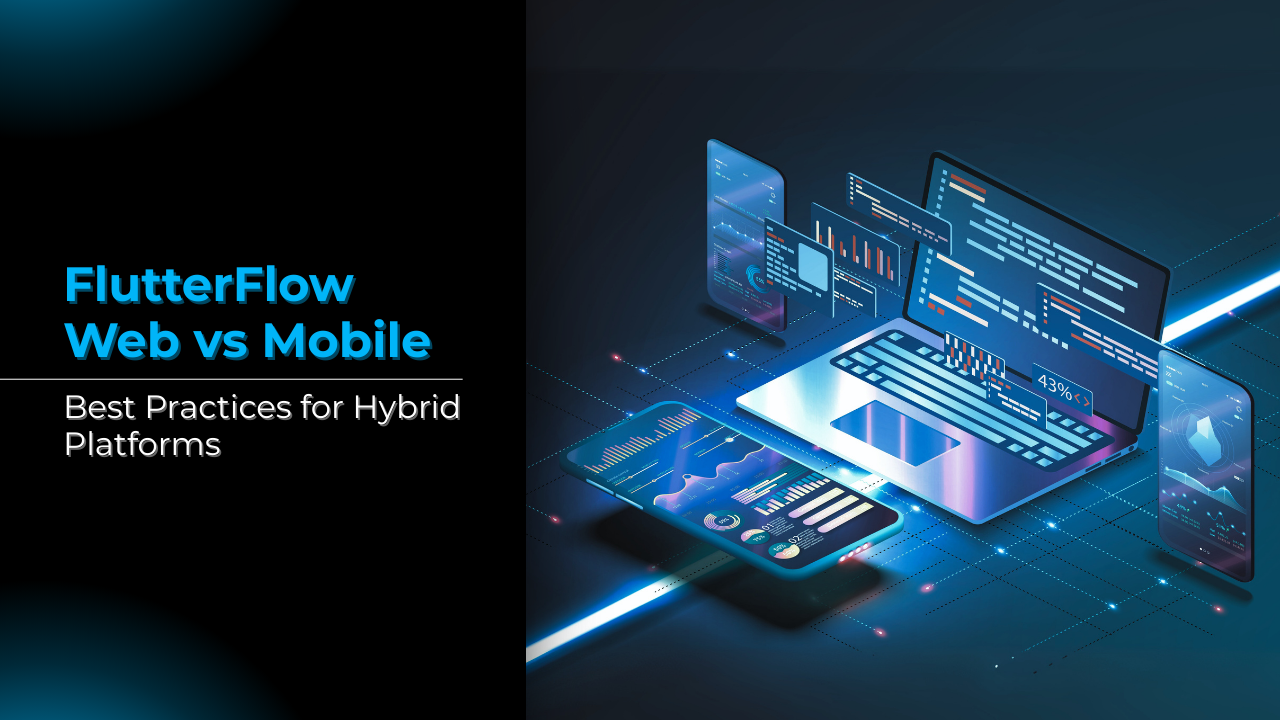
September 16, 2025
Users nowadays don't stick to one device; they may explore a product on the web and end up buying the same on the mobile app. This makes one thing crystal clear that businesses need an application that works flawlessly across devices. FlutterFlow, the low-code platform, enables developers to create apps for both web and mobile from a single project. Just exporting to multiple platforms is not enough, so for that, you need to understand the FlutterFlow web vs mobile differences and apply multi-platform FlutterFlow app best practices.
You can build apps for iOS, Android, and the web from a single codebase using FlutterFlow, but each platform has unique requirements that need to be considered.
Mobiles are optimized for smaller, touch-based screens. So the design must focus on clarity, whereas the web has a larger display, which allows complex layouts, sidebars, and mouse/keyboard interactions.
Best Practice: Use FlutterFlow’s responsive tools to adapt layouts across screen sizes. Avoid fixed dimensions and test designs at multiple breakpoints.
For mobile devices, users expect smooth transitions and responsiveness. On the web, faster load times are much more important than heavy animations. Flutter web apps often have larger initial bundle sizes than traditional web apps, which can slow down the first load. Once loaded, performance is usually smooth, but optimizing assets and reducing widget depth is essential.
Best Practice: Compress assets, use lazy loading, and minimize widget depth for performance.
Mobile apps provide accessibility to device features like camera, biometrics, GPS, etc. The web provides limited access, though Progressive Web App (PWA) capabilities are steadily growing.
Best Practice: If your app relies heavily on native features, prioritize mobile-first design.
A mobile application is best suited for short, frequent interactions such as messaging, shopping, etc. In contrast, a web application is ideal for longer workflows like dashboards, admin tasks, etc.
Best Practice: Align workflows with expected user behavior on each platform.
Instead of choosing only web or mobile, businesses can use FlutterFlow to deliver hybrid apps that serve both. Benefits include:
For startups and enterprises alike, hybrid apps provide scalability while ensuring users get a tailored experience regardless of device.
Follow these multi-platform FlutterFlow app best practices to create hybrid apps that perform well across platforms.
FlutterFlow excels at building applications rather than content-heavy websites. For blogs, SEO-driven sites, or media portals, traditional frameworks like React or Next.js may be more effective. But for apps that demand interaction, consistency, and cross-platform delivery, FlutterFlow provides a clear advantage.
The decision is not simply between FlutterFlow web vs mobile, but how to design for both effectively. Choose mobile-first if your app depends on native features and frequent use. If your focus is on complex dashboards or browser accessibility, then choose web. Opt for hybrid if your users need both, and apply multi-platform FlutterFlow app best practices to ensure the best experience across platforms.
By planning with responsiveness, tailoring features to context, and optimizing performance for each platform, businesses can create FlutterFlow applications that scale efficiently while feeling natural on both web and mobile.
© 2025 FlutterflowTech. All rights reserved